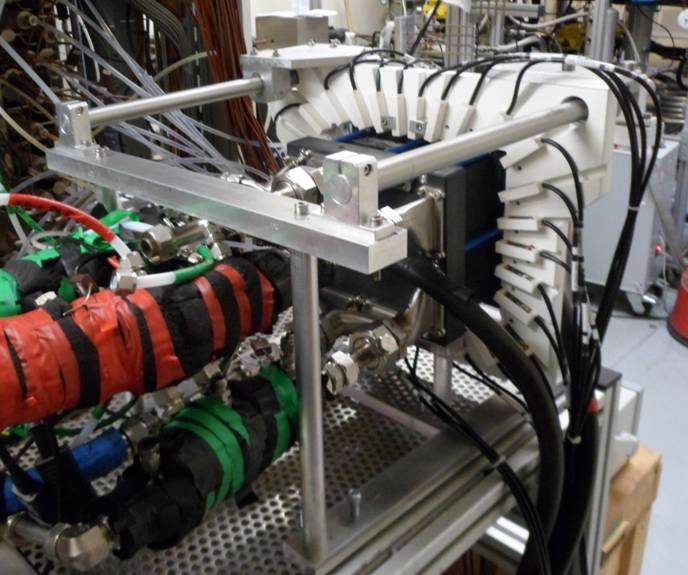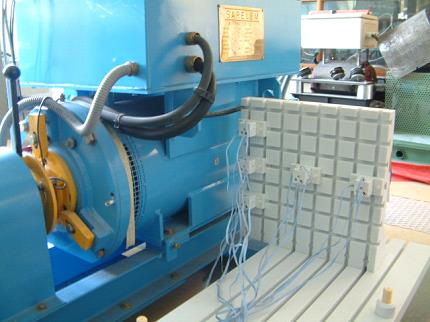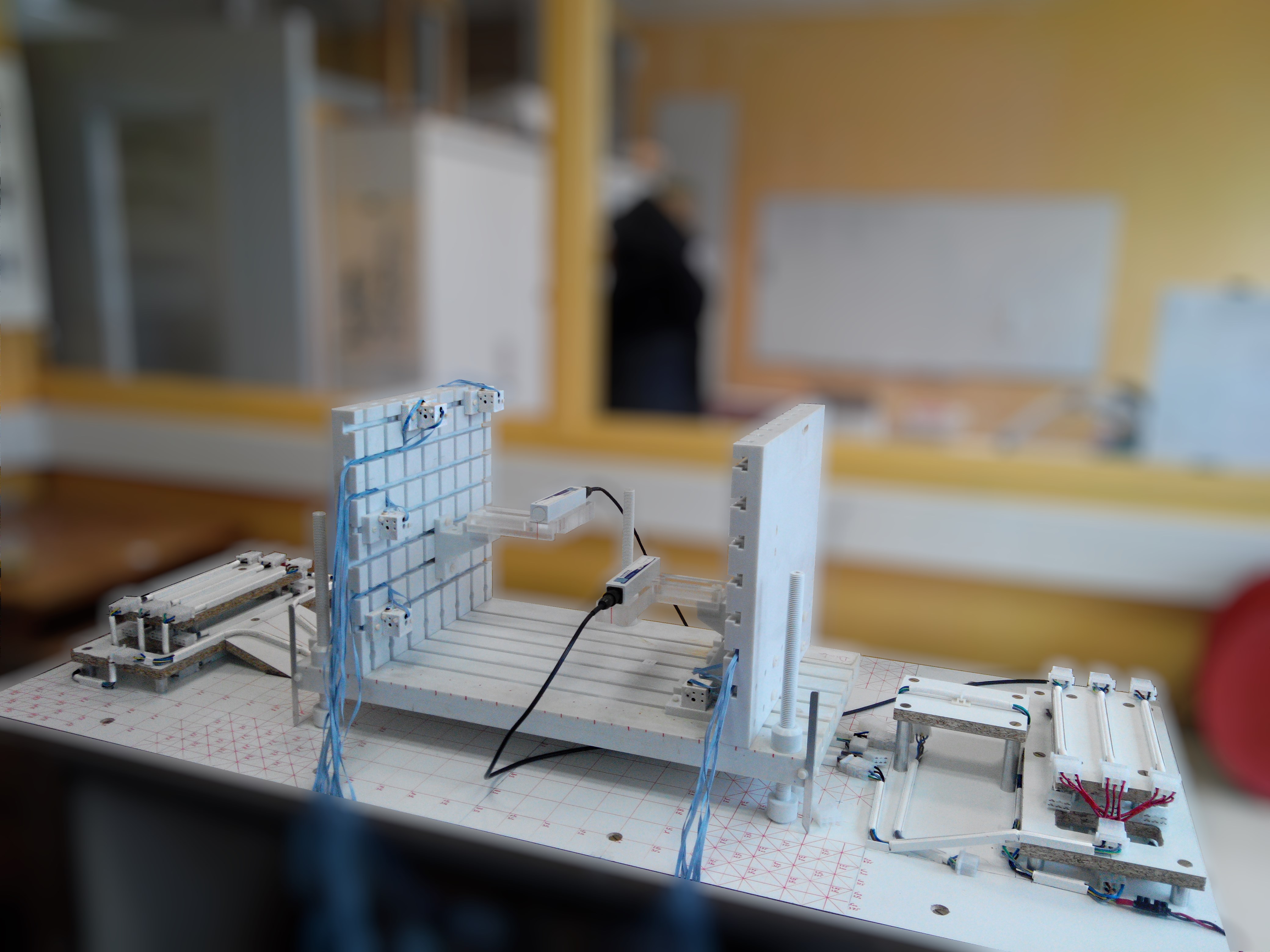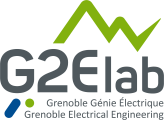The original methods dedicated to the problematic of the magnetism of the ship can naturally find some applications beyond the confidential domain of military ship magnetism. Indeed, the problem of characterization of sources by measurements of their external fields can answer several purposes.
First is extrapolation of the field. From a reduced set of measures, we characterize the parameters of a model able to predict fields where sensors cannot be positioned. This is particularly relevant when the CEM or sanitary norms are at stake.
Second is non-intrusive diagnosis systems. In this case, the equivalent source model must permit to discover anomalies in a system, or a failure.
Apart from experimental validations, this work is based on new electromagnetic formulations, allowing better and/or easier numerical inversions.
The point is about identifying causes of magnetic fields considering the effects (measures) and therefore to inverse naturally “ ill-posedproblems ". Thus, these works are carried out in close collaboration with the G2ELab MAGE team for the theoretical and numerical aspects.
First is extrapolation of the field. From a reduced set of measures, we characterize the parameters of a model able to predict fields where sensors cannot be positioned. This is particularly relevant when the CEM or sanitary norms are at stake.
Second is non-intrusive diagnosis systems. In this case, the equivalent source model must permit to discover anomalies in a system, or a failure.
Apart from experimental validations, this work is based on new electromagnetic formulations, allowing better and/or easier numerical inversions.
The point is about identifying causes of magnetic fields considering the effects (measures) and therefore to inverse naturally “ ill-posedproblems ". Thus, these works are carried out in close collaboration with the G2ELab MAGE team for the theoretical and numerical aspects.
Some projects and their results
- Diagnosis of hydrogen fuel-cell based on magnetic field measurements (Project ANR Omniscient). A hydrogen fuel-cell stack generates internal currents, and thus external magnetic fields. The objective of this project is to analyze external magnetic field measurements to do a diagnosis of the stack, and more precisely, to determine the local, internal current densities, using some non-invasive sensors, fluxgate magnetometers. For example, it proved to be a very good way to localize anomaly in the catalytic membranes. The main originality of our works lies in the experimental, metrological equipment we developed around an existing fuel-cell. Basic concept is that the main uniform current distribution in the stack doesn't create any measurable field on some components of the sensors. Main currents generate fields only on their ortho-radial components. Thus, using two-axis fluxgate magnetometers, placed in radial and axial alignments, we can eliminate the main ortho-radial component of the fields from the analysis, and focus on the fields created by non-homogeneous or abnormal current distributions. This configuration proved to improve drastically the signal to noise ratio, thus the numerical inversion, and to avoid plenty of useless sensors and measures.

- Diagnosis of alternator based on external magnetic fields measurements. All electric energy conversion system generates an external magnetic field. It is therefore reasonable to think that every defect appearing inside the system produces some effects on the outside field. Main interest of our method is to be non invasive and to focus the analysis on a direct image of the main phenomena achieving the conversion of energy, the magnetic field in the air gap between rotor and stator in the case of an alternator. We first developed our new numerical models to predict fields outside a defective alternator. Using this new model, we were able to invert it. This inversion applied on a set of external magnetic measurements, made it possible to determine the field in the air-gaps, and thus to produce a very precise diagnosis. Then, this study has been experimented and validated in laboratory on a model of turbo-alternator (30kW), and on site in an hydraulic power plant, in partnership with Electricity of France (EDF).

- Modeling of electromagnetic perturbation sources inside electric vehicles (in collaboration with the CEA-Leti, financed by Carnot Energies of the future). First aim of this work is to study and quantify the low frequency magnetic fields generated inside the cockpit of an electric vehicle. This is particularly relevant when ECM or sanitary norms are at stake. More generally, this thesis deals with sanitary norms, electromagnetic compatibility, and defect diagnosis. Direct modeling alone is not able to give a good evaluation of the fields because some parameters are not precisely known (exact position of the power cables, magnetic behavior of the materials, complexity of some magnetic sources). Instead and preferably, we used spherical harmonic formulations. However, this harmonic model involves many independent parameters, and thus many measurements are necessary. A way to minimize the measurement set is to bring known a priori information in the numerical system, using a statistical Bayesian method. Main original aspect of our work is that we use direct modeling to calculate an a priori set of spherical harmonics coefficients, and associated covariance matrix, necessary to determine the best a posteriori solution. Moreover, statistical aspect is analyzed using Unscented Transform, which happens to be not frequently used, but allows to speed up the results compared to more conventional methods, such as Monte Carlo method. Our approach has been validated on a half scale power circuitry model of an electric vehicle.



